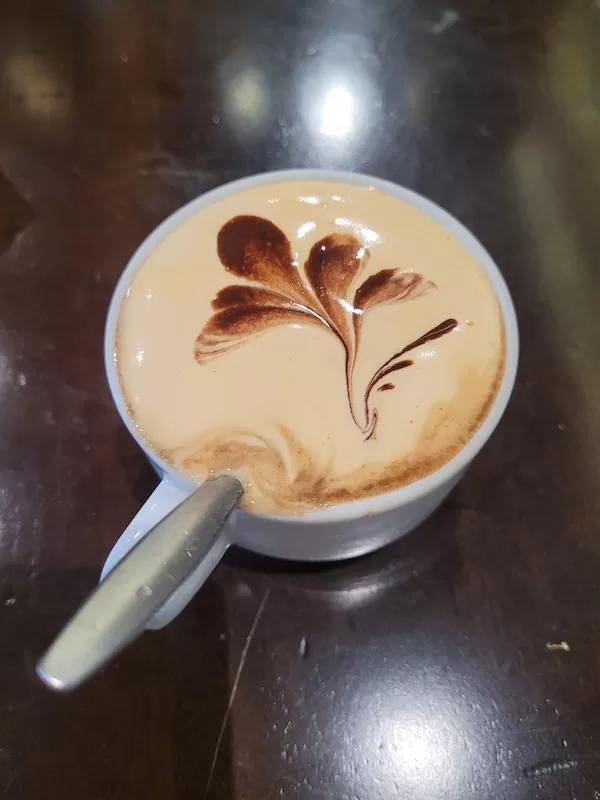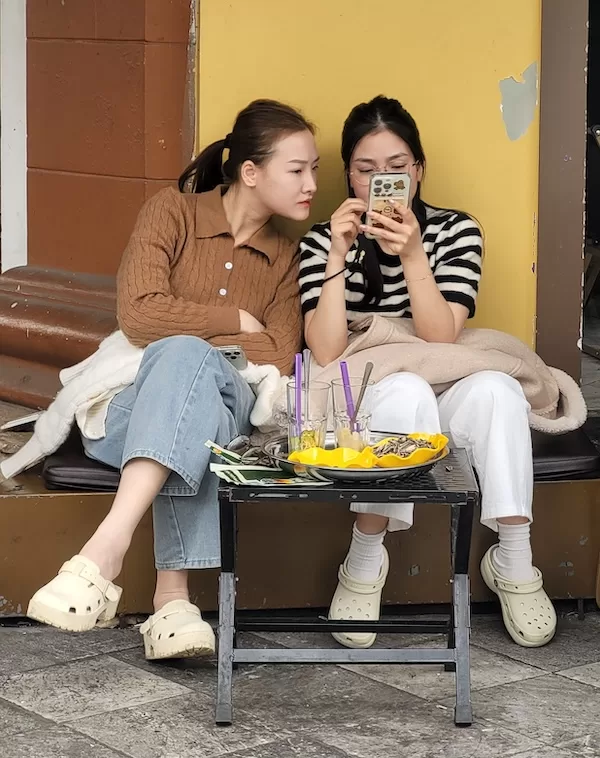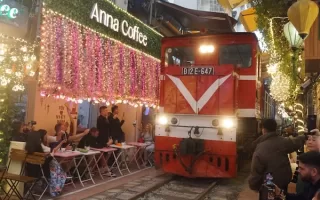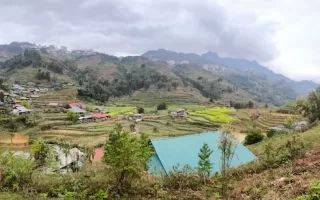Whoever Follows Me and Reads My Blog
Those who follow me and read my blog might remember my post titled “A Good Idea Begins with a Good Coffee,” in which I wrote that, for me, coffee is more than just a drink.
Drinking my coffee, the way I like it, is a sort of ritual, an integral part of my day.
In fact, drinking coffee is a kind of ritual on a global level.
You might be wondering why I’m going back and referencing a post I wrote almost six months ago, back when we were living in Thailand?
Because now we’re in Vietnam , and you can’t mention Vietnam without talking about its vibrant coffee scene.
And I, someone who can’t start the day without coffee, am fulfilling a little dream: visiting a country that’s considered a coffee powerhouse.
In Vietnam, especially in the big cities like Ho Chi Minh City and Hanoi, you’ll find coffee shops on every corner. Some are large and prominent, others small and even hidden. Any time of day is a good time for coffee.
So How Did Vietnam Become a Coffee Superpower?
Vietnam’s history includes a long French occupation, and in the 19th century, it became a French colony.
The French left a strong culinary influence (Vietnamese banh mi sandwiches are served in traditional French baguettes), and French coffee became a beloved and widely consumed beverage.
The Vietnamese became experts in cultivating beans and preparing the drink.
At first, they did this for the French rulers (back when the region was called Indochina), but later, after the war ended, the communist party incentivized coffee production to help rebuild the economy.
The plan was more successful than expected.
Without going into too much detail, this shift led to a dramatic increase in coffee production, and today, Vietnam is the second-largest coffee exporter in the world (after Brazil).
Economically, this resulted in a significant drop in poverty levels across the country.
The Vietnamese developed a unique way of processing the beans.
After roasting, grinding, and brewing, the result is a thick, dark liquid with intense, bitter flavors. To balance and mellow the taste, they add condensed milk.
The connection between coffee and condensed milk began when the colonial French wanted to enjoy coffee with milk, as they did in Europe. But in Vietnam at the time, there were no cows or refrigeration. So the French imported cans of condensed milk, a combination that created an optimal flavor balance and is still used in Vietnamese coffee today.
In many cafes, you’ll find familiar types of coffee: espresso, latte, cappuccino.
But if you’re already in Vietnam, don’t miss out on trying their unique coffee creations.
Unique Types of Coffee
Coconut Coffee
When I heard that coconut coffee is served in Vietnam, I knew I had to try it. I love coffee. I love coconut. The combination sounded amazing.
I came across several versions. In one, a scoop of coconut ice cream was placed in one cup, and in another cup, a shot of espresso to pour over. In another version, the coffee was served with coconut milk, and in yet another, the coffee came topped with sweet coconut flakes. All versions were delicious.


Egg Coffee
When I first heard about Vietnamese egg coffee, I tried to imagine what it would look and taste like.
My immediate thought was, “What a strange combination. Why would anyone want to drink coffee with egg?” (I pictured an omelet resting on top of a coffee cup 😆).
I quickly found out this is one of Vietnam’s most iconic drinks.
Vietnamese egg coffee (cà phê trứng) is their version of cappuccino.
Instead of frothing milk or a milk alternative, egg yolk is whipped together with condensed milk, creating a complex, rich, creamy drink that’s now popular worldwide.
This type of coffee is best enjoyed hot.
I followed a recommendation to a specific café…, ordered it, drank it, and… it was perfect.

Salt Coffee
Salt coffee? yes, you read that right, also called “salty coffee.” Again, I couldn’t understand the connection. Why drink coffee with salt? Especially when I personally don’t even like the taste of salt.
But hey, I’m in Vietnam, and it’s one of their specialty coffees, so I decided to order and try.
I ordered it, took a sip, and… wow. You could say I fell in love. From that moment on, I ordered salt coffee whenever I had the chance.
A unique and intriguing blend of bitter coffee, sweetened condensed milk, and salt.
I highly recommend Nón Cafe & More, where I had the best salty coffee in Hanoi.


If you’ve already tried the three coffee types I mentioned and want to explore further, you can also try yogurt coffee, a refreshing drink that, at the time of writing this, I haven’t yet tasted.
Coffee and Pastry?
If you’re at a café in Israel, or somewhere in Europe, you probably order a pastry with your favorite drink.
A combination that feels natural, good coffee with something sweet on the side, and you’re all set.
In Vietnam, at authentic local cafés, you won’t see pastries. Instead… you’ll find sunflower seeds.
Vietnamese people drink their coffee while cracking open piles of black sunflower seeds. In the best-case scenario, they place the shells in a little bowl. In other cases, they just toss them on the floor 🤨.
But don’t worry, if you’re a pastry lover, tourist-oriented cafes do offer pastries on the menu.

And What If You Don’t Like Coffee?
If you prefer tea, Vietnam has a tea culture just as rich as its coffee scene.
Vietnamese people love to drink tea at any opportunity, and you’ll find small tea stands on every corner.
Tea comes in a wide variety of flavors, served hot or cold.
Enjoy!!
And once you’ve done some tasting yourself, feel free to tell me which type of coffee you liked best.



